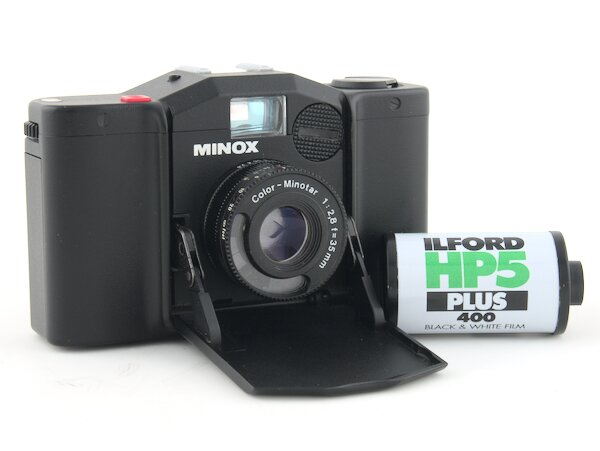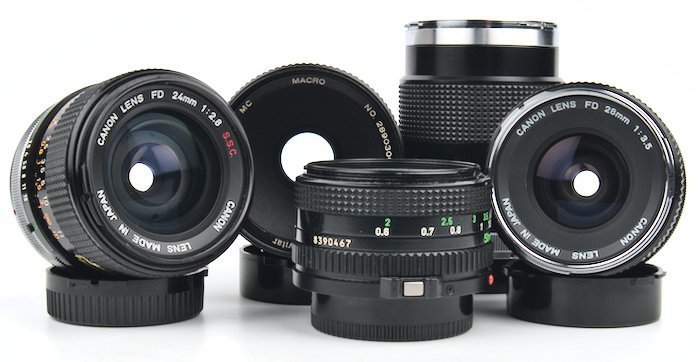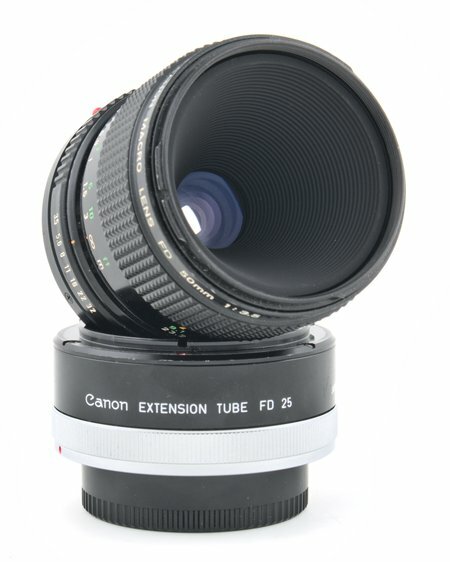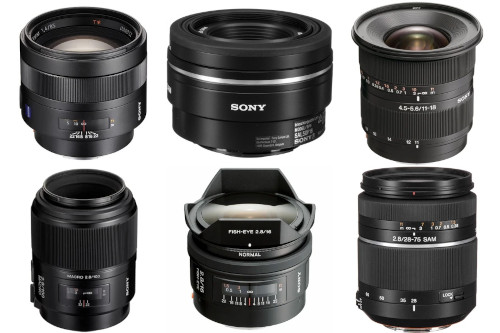
The 6 Best Lenses for the Sony A200
- Nathaniel Stephan
- Sony a200
- April 10, 2020
Table of Contents
The Sony A200 is an excellent SLT camera. If you don’t have a lens for your camera or are wanting for a new lens, this page will cover the top 6 lenses for the Sony SLT-A200.
Affiliate Advertising Disclosure
Outside the Shot is a participant in the Amazon Services LLC Associates Program, an affiliate advertising program designed to provide a means for sites to earn advertising fees by advertising and linking to Amazon.com.
As an eBay Partner, I may be compensated if you make a purchase. I also participate in affiliate advertising programs with KEH and Adorama. More can be found on the Affiliate Disclosure page.
Standard Primes
Sony 50mm f/1.8 SAM DT
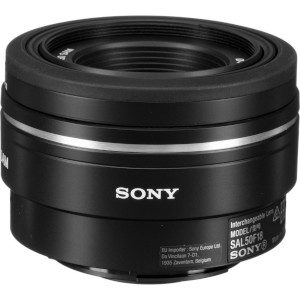
- Outstanding optics.
- Small and light weight.
- Can be difficult to find new.
- Smooth Autofocus Motor (SAM)
- Circular aperture.
See current price and more information on:
A fantastic combination of small size and lightweight. Accurate and quiet autofocus is provided by a built-in motor..
A circular aperture allows you to close down by 2-stops and still have an almost completely circular aperture. The result is attractive bokeh and more flexibility in controlling the depth of field.
Minolta Maxxum AF 50mm f/1.7
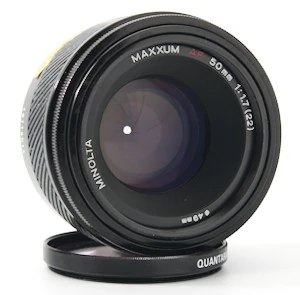
- Built-in lens hood.
- Amazing value.
- Light and compact.
- Widely available used.
- Coupled autofocus.
See current price and more information on:
This model was originally released by Minolta together with the launch of the A-mount. Due to how old the lens is, the autofocus is controlled by a motor built into the A200 camera body.
Autofocus that is coupled can be sluggish and noisey. If that is not a huge concern for you the results are amazing. {The bokeh is attractive and you’ll end up getting a classic rendering|You will end up with a classic look to your images and pleasing bokeh.
A further significant advantage of the lens is the cost. It is drastically more inexpensive compared to the Sony 50mm f/1.8 and also might be the lowest priced lens on the list.
Sony 50mm f/1.4
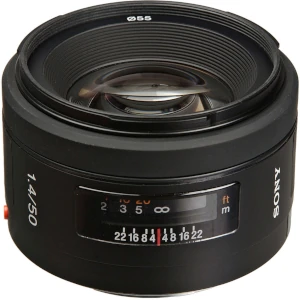
- Outstanding optics.
- Optical multi-coatings.
- Circular aperture.
- 55mm filter threads.
See current price and more information on:
A bit faster compared to the Minolta or Sony f/1.8, yet that can definitely be important when you are working without much light. That naturally comes at an increased expense.
It is still a small and lightweight lens that handles comfortably on the A200 and fits into just about any kind of camera bag.
A lower priced alternative is the Minolta AF 50mm f/1.4. Take into account that copies can be difficult to track down in good usable condition. It also was built with coupled autofocus, which is noisier and slower than lenses that were designed with built-in motors}.
Portrait & Telephoto Lens
Sony 85mm f/1.4 ZA
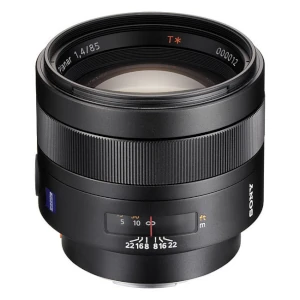
- Incredible bokeh.
- Excellent value used.
- T* coating to reduce flare and increase contrast.
- Astonishingly sharp wide open.
See current price and more information on:
Sony pulled out all the stops with this lens. The lens was built by Zeiss. The ZA (Zeiss Alpha) shows that Zeiss designed the lens exclusively for the Sony A-mount.
This lens is incredible. Tack sharp corner-to-corner with stunning colors that creates extraordinary portrait photos.
A potential downside is that it is fairly heavy thanks to being built like a tank and the autofocus can feel slow at times. Keep in mind, that you’ll find similar problems with any f/1.4 85mm.
Minolta Maxxum AF 85mm f/1.4
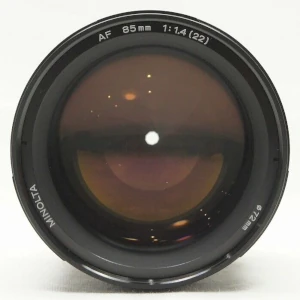
- Possible to find a good used deal.
- Superb image quality.
- Uses autofocus coupler.
- Double-Gauss design.
See current price and more information on:
In terms of price, the lens fits between the other 2. Acquiring a used copy in better than acceptable condition will likely be hard as a result of a small available supply.
The lens does have autofocus, but it uses a mechanical coupler and is driven by an in-camera body motor. This means that the lens will be somewhat loud and sluggish.
The lens is an older 6 lens element Double-Gauss design. That’s not a negative as the lens gives a distinctive look that is not able to be recreated using a contemporary lens.
Sony A200 Zoom Lenses
Sony 28-75mm f/2.8
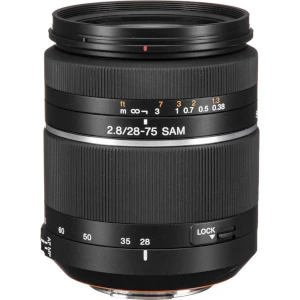
- Very usable zoom range.
- Great value used.
- Constant aperture.
- Smooth Autofocus Motor (SAM).
See current price and more information on:
If you want to shoot night events, travel, indoor shooting, and family photos, this is a great fast zoom for that. It’s a well designed lens with fairly quiet autofocus.
It is often compared to the excellent Zeiss 24-70mm lens, but it’s around half the weight and costs considerbly less. Both create pro images.
Sony 55-200mm f/4-5.6 SAM DT
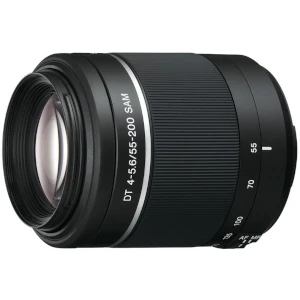
- Telephoto zoom range.
- Great for portrait or wildlife photography.
- Smooth Autofocus Motor (SAM).
- Inexpensive.
See current price and more information on:
While still generating excellent results, this is a less expensive solution. It is not a pro lens, consequently assuming that you don’t require all the bells and whistles, it is a great lens.
As a telephoto zoom, it has a terrific range for taking photos of sports, children outdoors, and wildlife.
The autofocus is fast and it renders sharp images. The body of the lens is made of plastic, which helps reduce weight.
Sony 75-300mm f/4.5-5.6
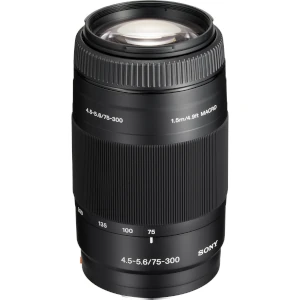
- Super telephoto zoom lens.
- Great for portrait or wildlife photography.
- 2.81 inches in diameter and 4.81 inches long.
- 55mm filter threads.
See current price and more information on:
This meets the criteria of a borderline super-telephoto lens. It is a very good low-cost solution for when you need a a long focal length.
It is only 2.8 inches (7.1 cm) in diameter, 4.8 inches (12.2 cm) long, and weighs in at 1 pound 2 ounces (510g). While that’s not lightweight, many professional zooms are many times heavier.
For slightly better functionality look for the Sony 70-300mm f/4.5-5.6 SSM ED G-Series, however count on spending around double the price.
Wide Angle Lens
Sony DT 11-18mm f/4.5-5.6
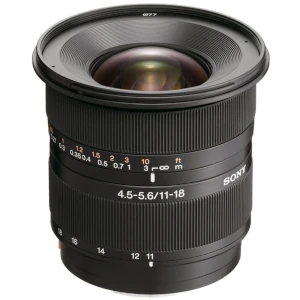
- Has a aspherical lens elements.
- Optical multi-coatings.
- Great value when purchased used.
- Circular aperture.
See current price and more information on:
Very good value for the money if you want to be able to capture excellent wide angle shots that a standard zoom cannot capture. Distortion, especially of straight vertical lines is minimal or non-existent unless you are trying to have an distorted perspective.
As well as being very good at capturing breathtaking landscapes, it is a great lens to travel with. The lens is wide enough so that when you see something you’ll be able to get everything you see into the Sony A200’s frame.
Sony 20mm f/2.8
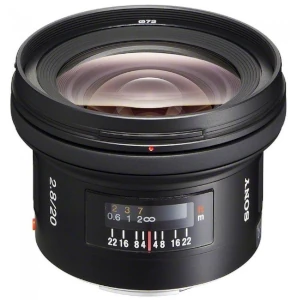
- Great for landscapes and architecture.
- Coated optics for clarity and definition.
- Rear focusing system for fast autofocus response.
- 72mm filter threads.
See current price and more information on:
It’s well engineered and does a good job of reducing lens distortion. In addition, an enormous amount of energy has been done to minimize flane and internal reflections.
The result is an outstanding lens that is suitable for architecture, landscape, and astrophotography. The rear focusing system means the front isn’t going to rotate meaning you won’t have any troubles using a polarizer or another filter.
Tokina AT-X 11-16mm f/2.8 DX II
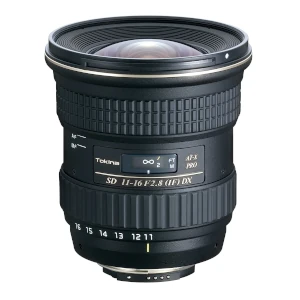
- Wide angle zoom lens.
- Hardened Alumite finish.
- Advanced optical coatings.
- All metallic moving parts.
- Designed for APS-C Sensors.
See current price and more information on:
It does not have extraordinarily fast autofocus, but the AF/MF focus clutch means it’s an excellent option for manual focusing. A push or pull of the focus ring switches the lens from MF to AF or vice versa.
The Tokina is faster when compared with the Sony 11-18mm, which is definitely not a major deal for landscape or architecture photos. Where you will see an improvement is during astrophotography. That’s a scenario where you will want to take advantage of the 1-to-2 stop advantage the Tokina supplies.
Fisheye
Sony 16mm f/2.8 Fisheye
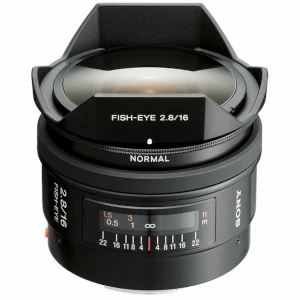
- Sharp corner-to-corner.
- 4 built-in filters: Normal, 056, B12, A12.
- 8 inch minimum focus distance.
- Aspherical and Extra-low Dispersion elements.
See current price and more information on:
Having built-in filters is a good inclusion because the lens has a fixed petal-style hood which prevents a lens filter from being attached to the front of the lens.
- 056 - Accented contrast for black and white photos.
- B12 - Correct color by eliminating red tones.
- A12 - Correct color by eliminating blue tones.
This lens has almost everything you could want from a fisheye lens. You can take advantage of the exaggerated distortion, but the image will remain tack sharp from corner-to-corner without vignetting.
Rokinon 8mm f/3.5 Fisheye
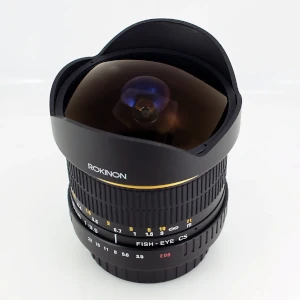
- Internal focus.
- 180 degree angle of view.
- Manual focus.
- Minimum focusing distance of 12 inches (0.3m).
- Designed for APS-C sensors.
See current price and more information on:
The lens features a curved front element that means filters cannot be used. It has a snap-on petal-shaped hood that you will want to confirm that it is included if you order a used lens.
Construction quality will be hit or miss on account of the affordable price of the lens. The majority of buyers are very pleased with the pictures they get. You will still want to adequately test the lens when you obtain it to be certain that the lens isn’t flawed.
Macro Lens
Sony 100mm f/2.8 Macro
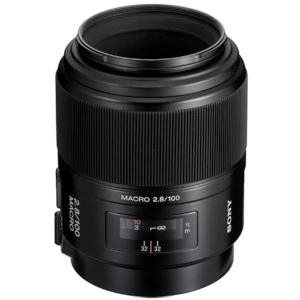
- 9 aperture blades.
- Focus range limiter.
- High contrast and resolution.
- 55mm filter threads.
See current price and more information on:
An ideal balance of weight, price, and working distance for the Sony A200. The autofocus can be a little loud, but for b taking macro pictures, manual focus is better.
For excellent images at 1:1 magnification the lens should be stopped down by 2 or more stops. By stopping down you will get a wider depth of field, which is crucial for macro photography.
Sony 50mm f/2.8 Macro
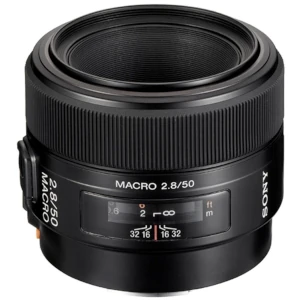
- 10.4 ounces (295g).
- Focus range limiter.
- Focus Hold button for full creative control.
- 55mm filter threads.
See current price and more information on:
A 50mm isn’t that great for 1:1 magnification because of how little working distance you will have. At 1:1 magnification, the front lens element will be around 2 inches (5 cm) far from the subject.
This lens is great for close-up, copy work, and tabletop photography. It enables you to get closer to a subject than a standard 50mm lens, and that is good for nature photography whenever you want to fill the frame with a smaller sized subject, for example a flower.
Tamron AF 90mm f/2.8 Di SP A/M 1:1 Macro
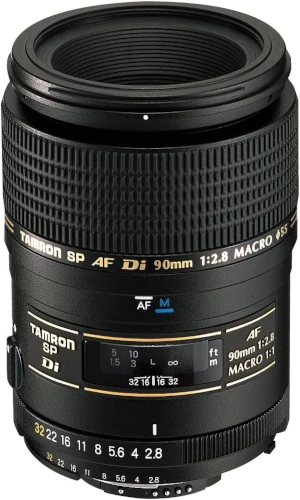
- Available in a variety of camera mounts.
- Improved resolution, chromatic correction, and optical coatings.
- Super Performance (SP)
- Focus clutch to switch between AF & MF.
See current price and more information on:
The focus ring feels great when manually focusing, and the lens also has autofocus. Closed down at least a couple of stops and you’ll get tack sharp shots.
Furthermore, be mindful when purchasing this lens as it is offered for a few camera mounts.
Used A-Mount Camera Lens Prices
Prices are constantly in flux. During the past handful of years, participation in film photography has been soaring. Seeing as there are 35mm Minolta cameras that use A-mount lenses, some upward pressure is put on the price of lenses.
The Sony A-mount also doesn’t have a sizeable market share. Due to this fact, a smaller amount of third party choices exist and the lenses made by Sony are routinely on backorder.
To find the best price on what you want, look at prices on different sites. For pre-owned lenses, be prepared to pay for when you see a great deal as they usually do not be available for very long.
What Lens Mount Does the A200 Use?
The Sony A200 uses the Sony A-mount. It’s also the same as the Minolta A-mount. This is because Sony bought Konica Minolta’s camera division in 2006.
The A-mount was developed by Minolta for the release of interchangeable lens cameras with autofocus in 1985. It’s still in use to this day.
Standard Lens Cap Size
55mm, but honestly the sizes are sporadic. Minolta lenses mostly feature 49mm filter threads.
There are a number of lenses that have much larger filter threads than 55mm. It isn’t uncommon to see 72mm or 77mm. It would have been helpful if Sony stuck to only 2 or 3 different filter thread sizes.
